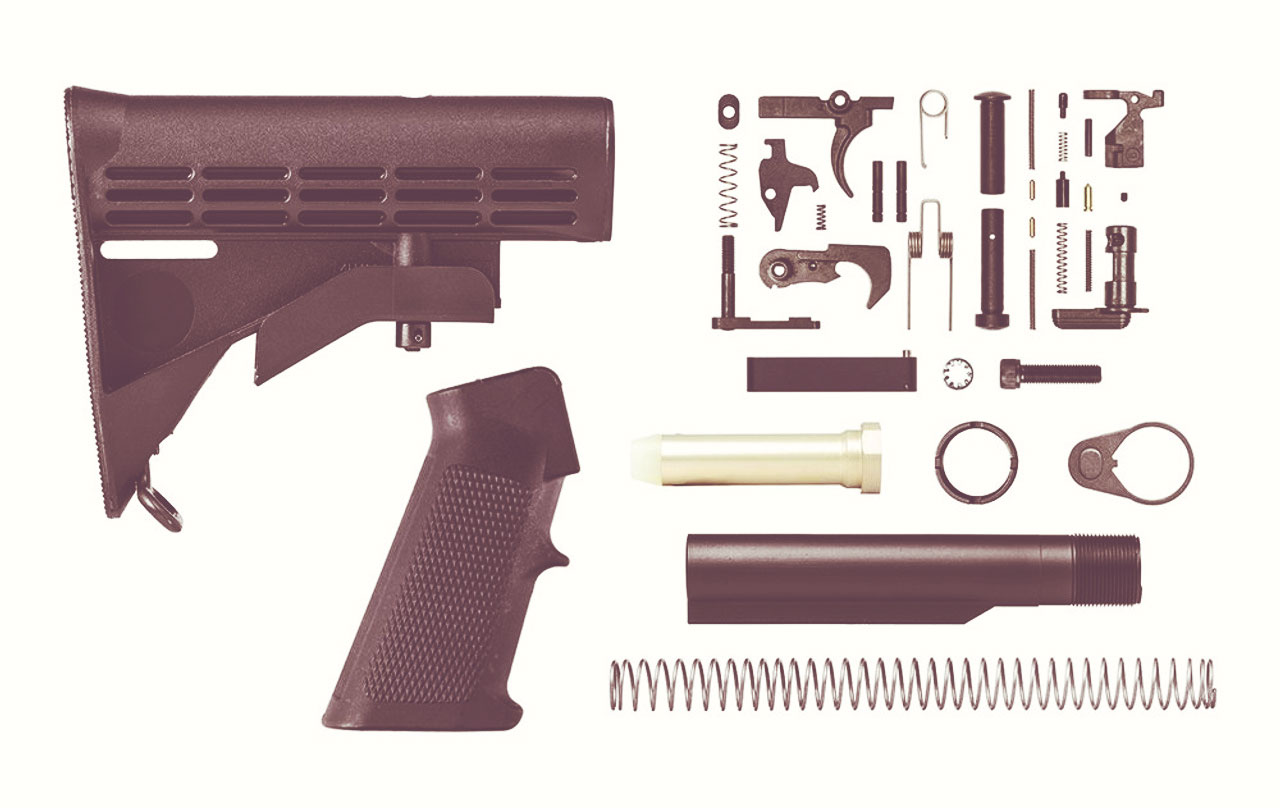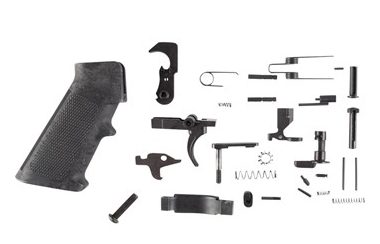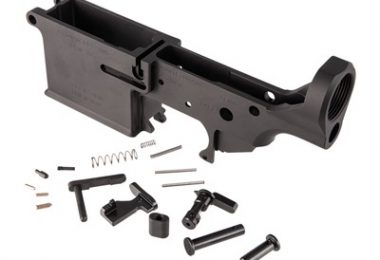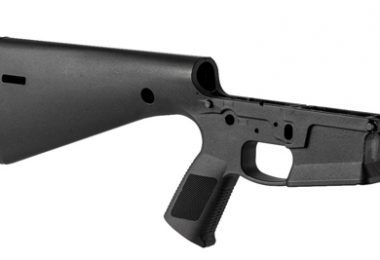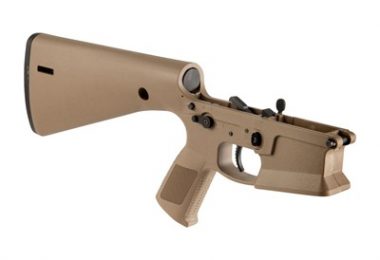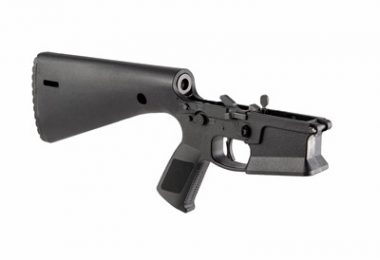Gun Lower Parts
The gun lower parts kit is one of the most important aspects of any firearm. It houses all the internal components that make the gun function. The kit includes the trigger assembly, bolt carrier group, charging handle, and magazine release. These parts must be of high quality to ensure reliability and safety.
The trigger assembly is responsible for firing the gun. It must be smooth and consistent to avoid misfires.
The most important part of your kit is the trigger, which ensures that your firearm fires safely. Make sure to choose a quality trigger for your kit, as it will be one of the most important safety features of your weapon.
The bolt carrier group contains the firing pin and extractor. It also cycles the action of the gun. The charging handle is used to charge the gun and cock the hammer. The magazine release allows the user to release the magazine from the gun.
These parts must be made from high-quality materials to ensure reliability and safety. The trigger assembly must be smooth and consistent to avoid misfires. The bolt carrier group must be made from durable materials to withstand the force of the firing pin. The charging handle must be easy to operate and the magazine release must be positive and reliable.
These parts must be installed correctly to ensure proper function. The trigger assembly must be installed in the gun's lower receiver. The bolt carrier group must be properly aligned in the gun. The charging handle must be installed in the correct position. The magazine release must be installed in the correct position.
Installing these parts correctly is critical to the function and safety of the gun. Improper installation can lead to misfires, jams, or other problems. Always follow the manufacturer's instructions when installing these parts. If you are unsure about anything, consult a qualified gunsmith.
The gun lower parts kit is an essential part of any firearm. It houses all the internal components that make the gun function. The kit includes the trigger assembly, bolt carrier group, charging handle, and magazine release. These parts must be of high quality to ensure reliability and safety.
Always follow the manufacturer's instructions when installing gun lower parts. If you are unsure about anything, consult a qualified gunsmith. Improper installation can lead to misfires, jams, or other problems.
Along with the trigger, your kit should also include a hammer, disconnector, pins, and springs. These parts work together to create a stable and safe firing mechanism for your weapon. It's important to ensure that all these parts are in good condition and properly lubricated, so they can function smoothly.
If you're looking to build your custom firearm, a gun lower parts kit is a great place to start. It provides you with all the essential components you need to create a functioning lower receiver. Be sure to research the different parts available and choose those that will best suit your needs and shooting style. With a little time and effort, you can create a one-of-a-kind firearm that you'll be proud to own.
Key Benefits:
- Essential components for a functioning lower receiver
- Choose from a variety of quality parts to create your perfect weapon
- Variety of colors and styles to choose from
- Build a custom firearm that meets your specific needs and shooting style
When it comes to building your gun, the lower parts kit is essential. It provides you with all the key components needed to create a functioning lower receiver. By choosing from a variety of quality parts, you can build a custom firearm that meets your specific needs and shooting style. With a little time and effort, you can create a one-of-a-kind firearm that you'll be proud to own.
Features of Gun Lower Parts
Gun lower parts kits typically include the following:
- hammer
- trigger
- pivot pin
- takedown pin
- buffer tube
- buffer spring
- bolt catch
- magazine catch
- bolt catch plunger
- selector switch
- detent pins
- springs
These kits do not include the following:
- fire control group (the trigger, hammer, etc.)
- pistol grip
- buttstock
- muzzle device
- flash hider
- compensator
- muzzle brake
- silencer/suppressor
The fire control group, pistol grip, and buttstock can be purchased as a separate kit or individually. The muzzle device is also sold separately.
Buffer tubes come in two sizes: commercial and mil-spec. Commercial-size tubes are 1" in diameter and typically have a wall thickness of 0.125". Mil-spec-size tubes are 1.14" in diameter and have a wall thickness of 0.125".
Buffer springs come in two lengths: standard and extended. Standard length springs are 9.5" long and are typically used with stocks that collapse. Extended length springs are 10.5" long and are typically used with stocks that do not collapse.
Bolt catch springs come in two lengths: standard and extended. Standard length springs are 1.5" long and are typically used with stocks that collapse. Extended length springs are 2" long and are typically used with stocks that do not collapse.
Selector switches come in three varieties: standard, ambidextrous, and 45-degree. Standard selector switches are designed to be used with the right hand only. Ambidextrous selector switches can be used with either the right or left hand. 45-degree selector switches can be used with either the right or left hand, but they are positioned at a 45-degree angle from the center line of the receiver.
Detent pins are used to secure the selector switch in the "safe" and "semi-automatic" positions. They are available in two lengths: standard and extended. Standard length detent pins are 1.5" long and are typically used with stocks that collapse. Extended length detent pins are 2" long and are typically used with stocks that do not collapse.
Springs are available in two lengths: standard and extended. Standard length springs are 1.5" long and are typically used with stocks that collapse. Extended length springs are 2" long and are typically used with stocks that do not collapse.
Gun Lower Receivers
A gun lower receiver is the housing for the fire control group, magazine well, and trigger guard. It is the part of the gun that is regulated by the Bureau of Alcohol, Tobacco, Firearms, and Explosives (ATF). Gun lower receivers are available in two varieties: complete and 80%.
Complete gun lower receivers include the following:
- fire control group
- magazine well
- trigger guard
80% of gun lower receivers do not include the following:
- fire control group
- magazine well
- trigger guard
80% of gun lower receivers are not considered firearms and can be purchased without a background check. However, they can only be completed by individuals with a federal firearms license (FFL).
ATF Regulations on Gun Lowers
The Bureau of Alcohol, Tobacco, Firearms, and Explosives (ATF) regulates gun lower receivers. According to the ATF, a gun lower receiver is "the frame or receiver of a firearm that provides housing for the fire control group, magazine well, and trigger guard."
Gun lower receivers are classified as firearms and must be manufactured by a licensed firearms manufacturer. They can only be sold to individuals with a federal firearms license (FFL).
Individuals who wish to purchase a gun lower receiver must undergo a background check. The background check will determine whether the individual is eligible to purchase a firearm.

